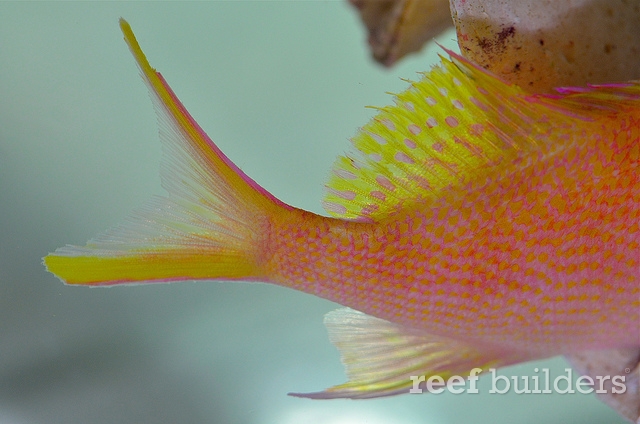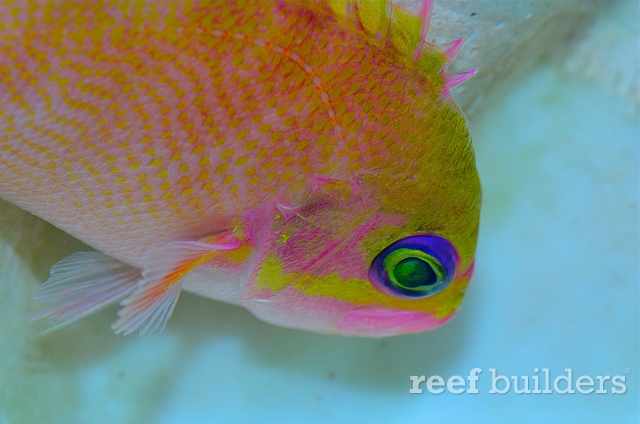Having recently untangled the confusing web spun by the three highly similar Odontanthias species, we are now able to look at things with a fresh slate and a brand new perspective. Here’s a looker worth a few minutes of your time. The real mccoy O. chrysostictus has appeared for what we assume, only the second time since the first by Bali-Aquarich in 2011.

We’ve mentioned and addressed the confusion between O. chrysostictus from Indonesia and O. katayamai from Japan before, but here’s a quick recap before we delve into this brand new exciting find. O. katayamai is a Japanese and Guam endemic which has only been caught from the waters of the former, and has only been offered three times as far as we know, all currently alive and swimming in various locales in Japan. O. chrysostictus, for which many of the latter has been erroneously labelled in the past, is a much rarer, highly similar Indonesian fish that has only been caught for the trade once.

The stunning moderately sized O. chrysostictus made a surprise appearance in MarineLife Aquarium, Singapore. Shop keeper Henry wasted no time in alerting us on his precious find. Henry is no stranger when it comes to deepwater fish, and has in the past, provided us with this amazing adult Maudai hogfish, juvenile izuensis hogfish, Sacura speciosa, and various other numbers from the deep. The fish arrived slightly worse for wear, but nothing a little TLC can’t fix up. We’ve been told the fish is already feeding, which is half the battle won. No abnormal swimming behavior was observed, which is another bonus for deepwater anthias’. It is currently hanging out under a large Tridacna shell exhibiting typical behavior with these deepwater Odontanthias species. With time, it will venture out more.

The fish came from Northern Sulawesi, Indonesia, from a soul crushing depth. The finnage and coloration, coupled with the capture location all points toward O. chrysostictus. This is the second confirmed documented piece to enter the trade. The first did not survive the week and died shortly after capture. If this specimen pulls through, it could very well be the only living O. chrysostictus documented on the internet as we know of.

The fish is moderately sized and not fully grown yet. With age and conditioning, we’re sure it will look absolutely stunning. Already we can see that each scale on the body is yellow centred. Coupled with that amazing purple face and yellow mask, the otherworldly tricolored eye, we have no issues believing this anthias could be the talk of the town for awhile. Superficially, O. chrysostictus appears less violet in overall appearance to O. katayamai. It’s body being more peach colored.
We promise to keep you updated on the progress of this deepwater anthias. Hopefully once settled down and given some quality reef chow, it will color up and grow out some of its incredible finnage. A big thanks to Henry of MarineLife for the heads up.



